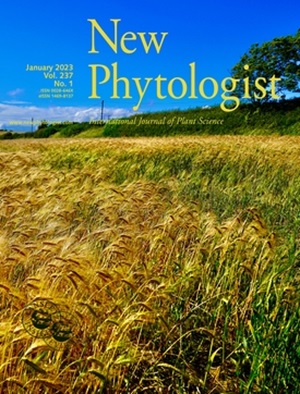The OST1-HOS1-HAT1 module regulates cold response in Arabidopsis thaliana
IF 8.1
1区 生物学
Q1 PLANT SCIENCES
引用次数: 0
Abstract
- Plants have evolved sophisticated strategies to cope with various environmental stresses. Recent studies have provided insights into the mechanisms of rapid cold stress response through key components including OST1, ICE1, HOS1, and CBFs. However, the mechanisms by which plants modulate the intensity of their cold tolerance in response to fluctuating temperatures remain largely unexplored.
- In this study, we employed a multidisciplinary approach integrating molecular biology, plant physiology, and genetic methodologies to comprehensively decipher the molecular mechanisms by which HAT1 regulates cold stress responses in plants and further unraveled its cold-dependent posttranslational modification network.
- We found that under normal conditions, HAT1 acts as a repressor of cold-induced expression of CBF and COR genes, attenuating the cold response. When plants are exposed to cold stress, cold triggers OST1 to phosphorylate HAT1 and facilitates its interaction with HOS1, which subsequently induces ubiquitination and degradation of HAT1. This process alleviates repression of the CBF and COR genes by HAT1 and activates the cold stress response.
- Thus, our results reveal that HAT1 acts as a brake to prevent excessive cold stress response. The OST1-HOS1 module regulates HAT1 protein stability, allowing plants to dynamically balance growth and cold tolerance in response to environmental signals.
OST1-HOS1-HAT1模块调控拟南芥的冷响应
植物进化出了复杂的策略来应对各种环境压力。最近的研究通过包括OST1、ICE1、HOS1和CBFs在内的关键成分对快速冷应激反应的机制进行了深入研究。然而,植物调节其耐寒性强度以响应波动温度的机制在很大程度上仍未被探索。本研究采用分子生物学、植物生理学和遗传学等多学科方法,全面解读了HAT1调控植物冷胁迫反应的分子机制,并进一步揭示了其冷依赖的翻译后修饰网络。我们发现,在正常条件下,HAT1作为冷诱导CBF和COR基因表达的抑制因子,减弱冷反应。当植物处于低温胁迫时,低温触发OST1磷酸化HAT1并促进其与ho1的相互作用,进而诱导HAT1的泛素化和降解。这一过程减轻了HAT1对CBF和COR基因的抑制,激活了冷应激反应。因此,我们的研究结果表明,HAT1作为一个制动器,防止过度的冷应激反应。OST1-HOS1模块调节HAT1蛋白的稳定性,使植物能够根据环境信号动态平衡生长和耐寒性。
本文章由计算机程序翻译,如有差异,请以英文原文为准。
求助全文
约1分钟内获得全文
求助全文
来源期刊

New Phytologist
生物-植物科学
自引率
5.30%
发文量
728
期刊介绍:
New Phytologist is an international electronic journal published 24 times a year. It is owned by the New Phytologist Foundation, a non-profit-making charitable organization dedicated to promoting plant science. The journal publishes excellent, novel, rigorous, and timely research and scholarship in plant science and its applications. The articles cover topics in five sections: Physiology & Development, Environment, Interaction, Evolution, and Transformative Plant Biotechnology. These sections encompass intracellular processes, global environmental change, and encourage cross-disciplinary approaches. The journal recognizes the use of techniques from molecular and cell biology, functional genomics, modeling, and system-based approaches in plant science. Abstracting and Indexing Information for New Phytologist includes Academic Search, AgBiotech News & Information, Agroforestry Abstracts, Biochemistry & Biophysics Citation Index, Botanical Pesticides, CAB Abstracts®, Environment Index, Global Health, and Plant Breeding Abstracts, and others.
 求助内容:
求助内容: 应助结果提醒方式:
应助结果提醒方式:


